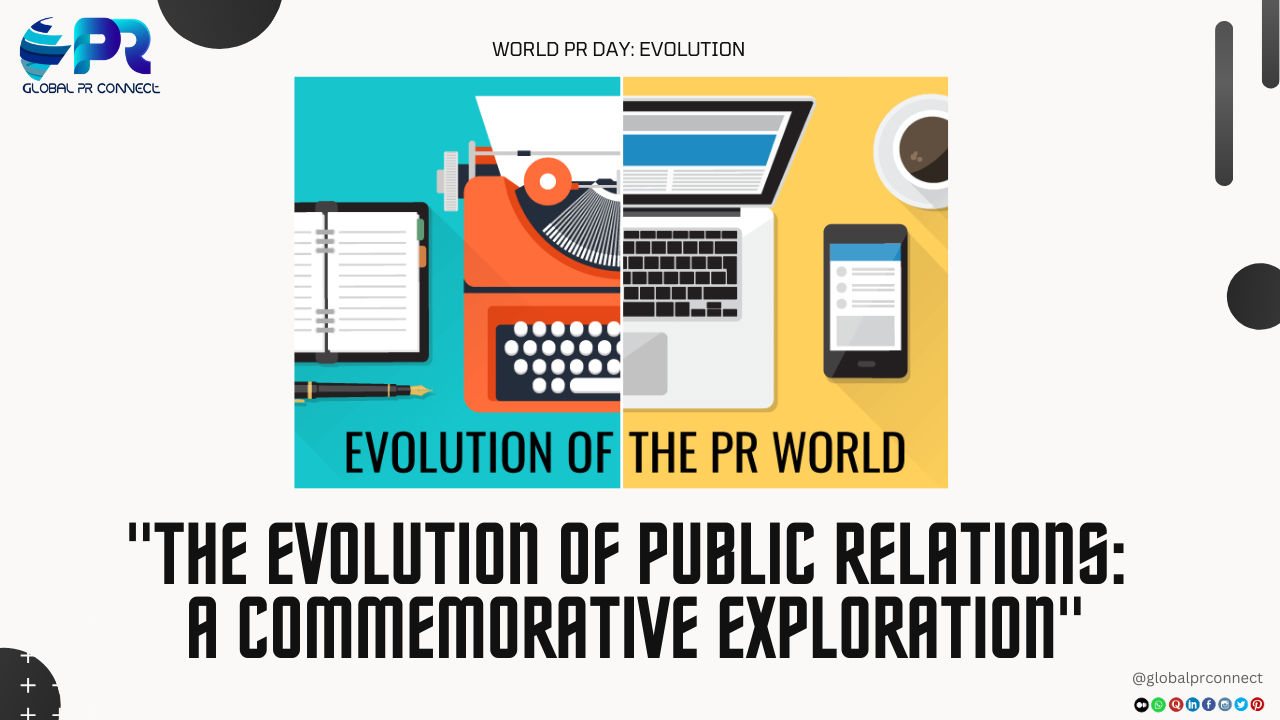A Story of Change and Adaptation.
It was in a small, bustling office in Delhi a decade ago. Some driven minds at Global PR Connect were sitting and talking heatedly about the future of public relations. The landscape, they knew, was going to change dramatically. Still, even they could not have foreseen that the next decade would be so transformational.
It is truly great to think back on the progress the industry has made today, in light of World PR Day. From traditional press releases and media pitches to AI-driven creative development and real-time analytics, very few changes have occurred that have been nothing less than a revolution in PR.
The Evolution of Public Relations
Public relations has, at its core, been about relationships and reputation management and telling stories that resonate. The method and tools have continued to evolve subtly but remain the same significantly.
The Early 2010s: The Traditional Roots
The early 2010s were ruled by traditional media. Press releases, media kits, and face-to-face networking were the bread and butter of any PR professional’s toolkit. Though effective, these means were usually time-consuming and lacked the immediacy brought about by today’s digital tools.
Mid-2010s: The Digital Shift
By the mid-2010s, this started to evolve further with the rise of social media. Twitter, Facebook, and LinkedIn emerged as the most prominent real-time instant channels for communications and engagement. Suddenly, every PR professional needed to adapt, attempting to understand how to craft messages that could go viral in minutes.
Late 2010s: The Era of Data and Analytics
Big data and analytics entered PR in force only during the late 2010s. Suddenly, professionals were placed at a trajectory with metadata about their audience, further helping in formulating campaigns that were targeted and more result-oriented. PR strategies evolved to become more sophisticated.
2020s: The AI Revolution
Moving into the 2020s, the role of artificial intelligence came to the fore. Today, AI tools assist PR professionals with tasks that range from automating routine chores to creating insightful content. AI-driven analytics go deeper in their insights and allow closer targeting and measurement for PR.
The Current Landscape: Challenges and Opportunities
There are many challenges for the PR industry despite all these developments. Rapidly evolving technology demands continuous upskilling by professionals. Misinformation and fake news pose new tests before public trust.
These challenges also bring opportunities. The ability to harness AI and big data allows PR firms like GPRC to offer more personalized and potent campaigns. Social media delivers access to a cross-section of audiences, as well as the capacity for real-time engagement with feedback.
A Vision for the Future
The future is huge and exciting for PR. Technologies like augmented reality and virtual reality are coming, offering the potential for audiences to be surrounded with experiences. The integration of AI will become even more seamless, providing levels of insight and automation that haven’t before been possible.
In these, we at GPRC do not take a backseat. Our founder says, “[Founder’s Name],” “Public relations today is not purely controlling information; it’s creating meaningful bridges, establishment of trust in an increasingly digital world.”
Transforming Lives with Technology
Technology has thus changed the lives of PR professionals. Tools like AI have made processes easier and more creative. For example, today, AI can do the development of press releases and social media posts. In this way, it gives time to PR professionals for working on strategy and innovation.
Second, how big data is analyzed in real time has changed the metric of success. We could now effectively measure campaigns and make data-driven decisions instantaneously.
From Traditional to Digital
Where traditional PR methods still work, shifting to digital opened other ways of engagement. For example, influencer marketing comes into the very forefront. It helps brands target certain types of target audiences in very organic ways.
Content creation has also evolved. Until a few years ago, a well-written press release was the bedrock of any PR campaign. Then came multimedia content in the shape of videos, infographics, and podcasts, which were more interactive for audiences. AI took this a step further with personalization, tailoring content to suit audience preferences.
Conclusion: Embracing Change
We can tell that the PR industry has come of age as we celebrate World PR Day. This journey of PR, from traditional methods and digital innovation to data-driven strategy and AI-powered tools, has been one of continuous learning and adaptation.
We, at GPRC, embrace change and look to the future with buoyancy. As our founder says, “The heart of PR will always be relationship and trust building. As long as we keep that at the core of what we do, we will continue to thrive in this ever-changing landscape.”
Here’s to the future of public relations and possibilities where the world is the limit, as we raised another year of celebration of World PR Day.
 Skip to content
Skip to content 